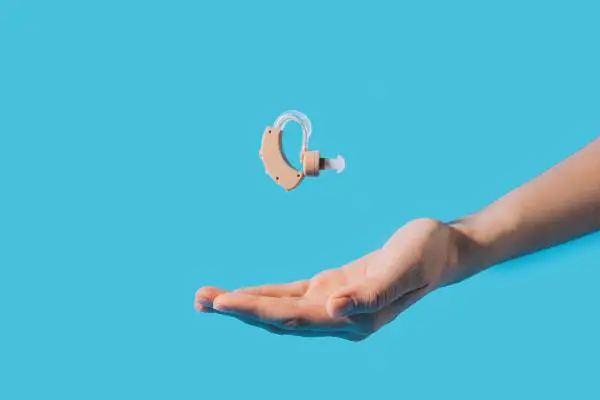Introduction
The world of silence, for some, is not a choice. It’s a consequence of a condition known as sensorineural hearing loss. Imagine the isolation of not being able to hear the laughter of your grandchildren, the melody of your favorite song, or even the simple sounds of nature. However, amid the trials and tribulations, there lies a beacon of hope – scientific advancements. As we sail through the sea of research, therapeutic developments, and discoveries, we uncover the potential to reclaim the lost sounds, especially for our seniors living with sensorineural hearing loss.
This article is a beacon of hope, a message of optimism for those grappling with sensorineural hearing loss. It is a testament to human resilience and ingenuity, demonstrating how far we’ve come in addressing this condition. We aim to navigate the promising avenues of gene therapy, surgical advancements, the potential of stem cells, the role of neuroplasticity, and the intriguing link between hormones and sensorineural hearing loss.
Armed with knowledge, compassion, and empathy, we seek to illuminate the path for our seniors and inspire confidence that they are not alone. Let’s delve into the evolving narrative of sensorineural hearing loss and explore the array of solutions that science is bringing to the horizon.
AMZ-Lexie Lumen Self-Fitting OTC Hearing Aids
Experience the Ultimate Sound Quality with Lexie Lumen self-fitting OTC hearing aids. These remarkable devices utilize dual microphones to deliver crystal clear sound, immersing you in a world of auditory excellence. Say goodbye to communication struggles in public spaces or on phone calls, as our Telecoil functionality directs speech directly to your hearing aids via an induction loop system. Rediscover the joy of hearing with unmatched clarity and precision.
Embrace an Active Lifestyle with Lexie Lumen hearing aids. Our cutting-edge sweatproof technology, including Nano coating, safeguards against moisture damage, allowing you to wear your hearing aids during outdoor activities like walks, runs, and open-air events. With Lexie, you can live life to the fullest without compromising on the quality or lifespan of your devices. Don’t let hearing loss hold you back—experience the freedom of superior hearing with Lexie Lumen self-fitting OTC hearing aids.
The Promise of Gene Therapy in Sensorineural Hearing Loss
Gene therapy is emerging as a revolutionary approach to treating sensorineural hearing loss. Through the manipulation of genes within the inner ear cells, scientists aim to restore or preserve hearing. An example of this approach is the use of vectors, like harmless viruses, to deliver therapeutic genes to the damaged cells.
Consider the story of Robert, a senior with progressive sensorineural hearing loss. Robert participated in a clinical trial investigating a gene therapy technique to slow the progression of his hearing loss. The treatment aimed to replace the defective genes in his inner ear cells with healthy copies. The results were promising, providing Robert with an improved sense of hearing and an enhanced quality of life.
Advancements in Surgical Treatments for Sensorineural Hearing Loss
While hearing aids and cochlear implants have long been part of the arsenal against sensorineural hearing loss, surgical treatments have evolved to offer more options. New techniques aim to restore natural hearing by directly addressing the root causes of the condition, such as damage to the inner ear cells.
Linda, a senior living with sensorineural hearing loss, underwent a groundbreaking surgical procedure. The surgery involved the implantation of a tiny device in her cochlea, designed to stimulate her auditory nerve directly. Post-surgery, Linda experienced a remarkable improvement in her hearing abilities, reiterating the potential of advanced surgical treatments.
Stem Cells and Sensorineural Hearing Loss The Potential for Regeneration
Stem cell research is providing a ray of hope in the world of sensorineural hearing loss. With their ability to differentiate into a variety of cell types, stem cells carry the potential to regenerate damaged hair cells in the inner ear, a key factor in sensorineural hearing loss.
James, a senior who had experienced sensorineural hearing loss for several years, decided to participate in a study focusing on stem cell therapy. This research aimed to implant stem cells into the cochlea, intending to regenerate the lost hair cells. The results were encouraging, as James reported an improvement in his hearing capabilities, emphasizing the potential of stem cell therapy.
Deafness: A Journey of Challenges and Triumphs
The Role of Neuroplasticity in Sensorineural Hearing Loss Research
Neuroplasticity, the brain’s ability to change and adapt, is a compelling area of research in understanding and managing sensorineural hearing loss. Scientists are exploring how the brain can be trained to compensate for the hearing loss by enhancing its ability to process sound signals.
Let’s consider Susan, who has lived with sensorineural hearing loss for years. She joined a research study that employed neuroplasticity-based techniques, such as auditory training exercises, to improve her hearing. The program helped Susan refine her ability to recognize and interpret sounds, demonstrating the promising role neuroplasticity plays in managing sensorineural hearing loss.
Turn Up the Volume on Hearing Loss Awareness
Exploring the Link Between Hormones and Sensorineural Hearing Loss
Recent research suggests a potential link between hormonal changes and sensorineural hearing loss. Hormones such as estrogen and progesterone are believed to play a protective role in hearing, and imbalances may contribute to hearing loss.
Grace, a postmenopausal woman with sensorineural hearing loss, participated in a study examining the effects of hormone replacement therapy (HRT) on hearing loss. The research is still ongoing, but the potential link offers an exciting avenue for future treatment options.
Tinnitus: why it’s still such a mystery to science
Conclusion
The landscape of sensorineural hearing loss, as we’ve seen, is not just a chronicle of struggles but a saga of continuous discovery and innovation. Through the promising realms of gene therapy, advanced surgical treatments, stem cell research, neuroplasticity, and hormonal influences, we glimpse a future filled with optimism and potential.
Every story we’ve shared, every person we’ve introduced, and every breakthrough we’ve explored is a testament to the resilience of the human spirit, the ingenuity of the human mind, and the relentless pursuit of a world where sensorineural hearing loss no longer limits the melody of life.
So, for our seniors and their loved ones living with sensorineural hearing loss, remember that this journey does not tread upon the path of solitude. It is a voyage shared with brilliant scientists, empathetic caregivers, and a society gradually awakening to the symphony of inclusivity and understanding.
With every sunset, there dawns a new day of scientific breakthroughs and innovative therapies. Let’s keep hope alive, for we are on the precipice of transformation, on the brink of turning the silence of sensorineural hearing loss into a crescendo of sounds, reconnecting our seniors to the beautiful symphony of life.






